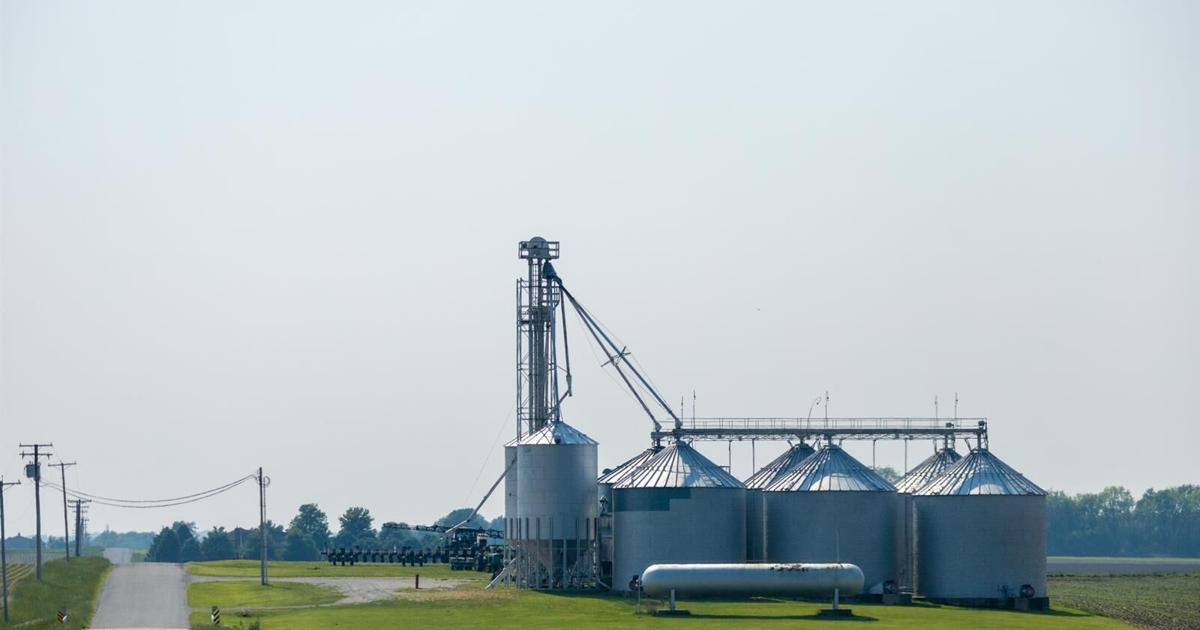Loan program helps farmers invest in environmentally sustainable practices
Loan program helps farmers invest in environmentally sustainable practices WREX.com


Farmers Receive Support for Climate-Smart Agricultural Practices

Introduction
The United States Department of Agriculture’s Farm Service Agency (FSA) is providing assistance to farmers in implementing sustainable practices on their farms. The FSA’s Farm Loan Programs are available to support climate-smart agricultural practices that align with the Sustainable Development Goals (SDGs).
Climate-Smart Agricultural Practices
Climate-smart agricultural practices aim to capture and isolate carbon, improve water management, restore soil health, and provide other significant environmental benefits. These practices build upon existing methods such as cover cropping and nutrient management.
Supporting Farmers
FSA Administrator Zach Ducheneaux emphasizes the importance of providing financial resources to farmers and ranchers who want to enhance their efforts in sustainable farming. The FSA offers a variety of loans that can help farmers explore opportunities to make their operations more efficient and environmentally friendly.
Loan Programs
The Farm Loan Programs are designed to assist producers in starting, expanding, or maintaining their family agricultural operations while adopting climate-smart practices. These programs include the FSA’s Conservation Reserve Program, crop insurance options for conservation support, and conservation programs provided by the USDA’s Natural Resources Conservation Service (NRCS), where the USDA shares part of the starting cost.
Utilizing Funds
The loans can be used to purchase necessary equipment for implementing climate-smart practices, such as rotational grazing systems or precision agriculture equipment for a no-till residue management system. Additionally, funds can be allocated for:
- Precision Agriculture Equipment
- Cover Crops (seeds)
- No/Reduced Till Equipment
- Livestock Facility Air Scrubber or Waste Treatment Equipment
- Cross Fencing
Benefits and Streamlined Process
Implementing climate-smart practices can lead to lower input costs, higher yields, and a positive impact on both the producers’ bottom line and natural resources. The FSA has made improvements to streamline the loan application process, making it easier for farmers to access these resources.
Conclusion
For more information on climate-smart agriculture and forestry, visit the Climate-Smart Agriculture and Forestry webpage on farmers.gov or www.usda.gov.
SDGs, Targets, and Indicators
1. Which SDGs are addressed or connected to the issues highlighted in the article?
- SDG 2: Zero Hunger
- SDG 13: Climate Action
- SDG 15: Life on Land
2. What specific targets under those SDGs can be identified based on the article’s content?
- SDG 2.4: By 2030, ensure sustainable food production systems and implement resilient agricultural practices that increase productivity and production, that help maintain ecosystems, that strengthen capacity for adaptation to climate change, extreme weather, drought, flooding, and other disasters, and that progressively improve land and soil quality.
- SDG 13.2: Integrate climate change measures into national policies, strategies, and planning.
- SDG 15.3: By 2030, combat desertification, restore degraded land and soil, including land affected by desertification, drought, and floods, and strive to achieve a land degradation-neutral world.
3. Are there any indicators mentioned or implied in the article that can be used to measure progress towards the identified targets?
Yes, the article mentions several indicators that can be used to measure progress towards the identified targets:
- Adoption of climate-smart agricultural practices
- Carbon capture and isolation
- Improved water management
- Restoration of soil health
- Increased efficiency and positive impact on the environment
Table: SDGs, Targets, and Indicators
| SDGs | Targets | Indicators |
|---|---|---|
| SDG 2: Zero Hunger | 2.4: By 2030, ensure sustainable food production systems and implement resilient agricultural practices that increase productivity and production, that help maintain ecosystems, that strengthen capacity for adaptation to climate change, extreme weather, drought, flooding, and other disasters, and that progressively improve land and soil quality. | – Adoption of climate-smart agricultural practices – Improved water management – Restoration of soil health |
| SDG 13: Climate Action | 13.2: Integrate climate change measures into national policies, strategies, and planning. | – Adoption of climate-smart agricultural practices – Carbon capture and isolation – Improved water management |
| SDG 15: Life on Land | 15.3: By 2030, combat desertification, restore degraded land and soil, including land affected by desertification, drought, and floods, and strive to achieve a land degradation-neutral world. | – Restoration of soil health – Increased efficiency and positive impact on the environment |
Copyright: Dive into this article, curated with care by SDG Investors Inc. Our advanced AI technology searches through vast amounts of data to spotlight how we are all moving forward with the Sustainable Development Goals. While we own the rights to this content, we invite you to share it to help spread knowledge and spark action on the SDGs.
Fuente: wrex.com

Join us, as fellow seekers of change, on a transformative journey at https://sdgtalks.ai/welcome, where you can become a member and actively contribute to shaping a brighter future.







